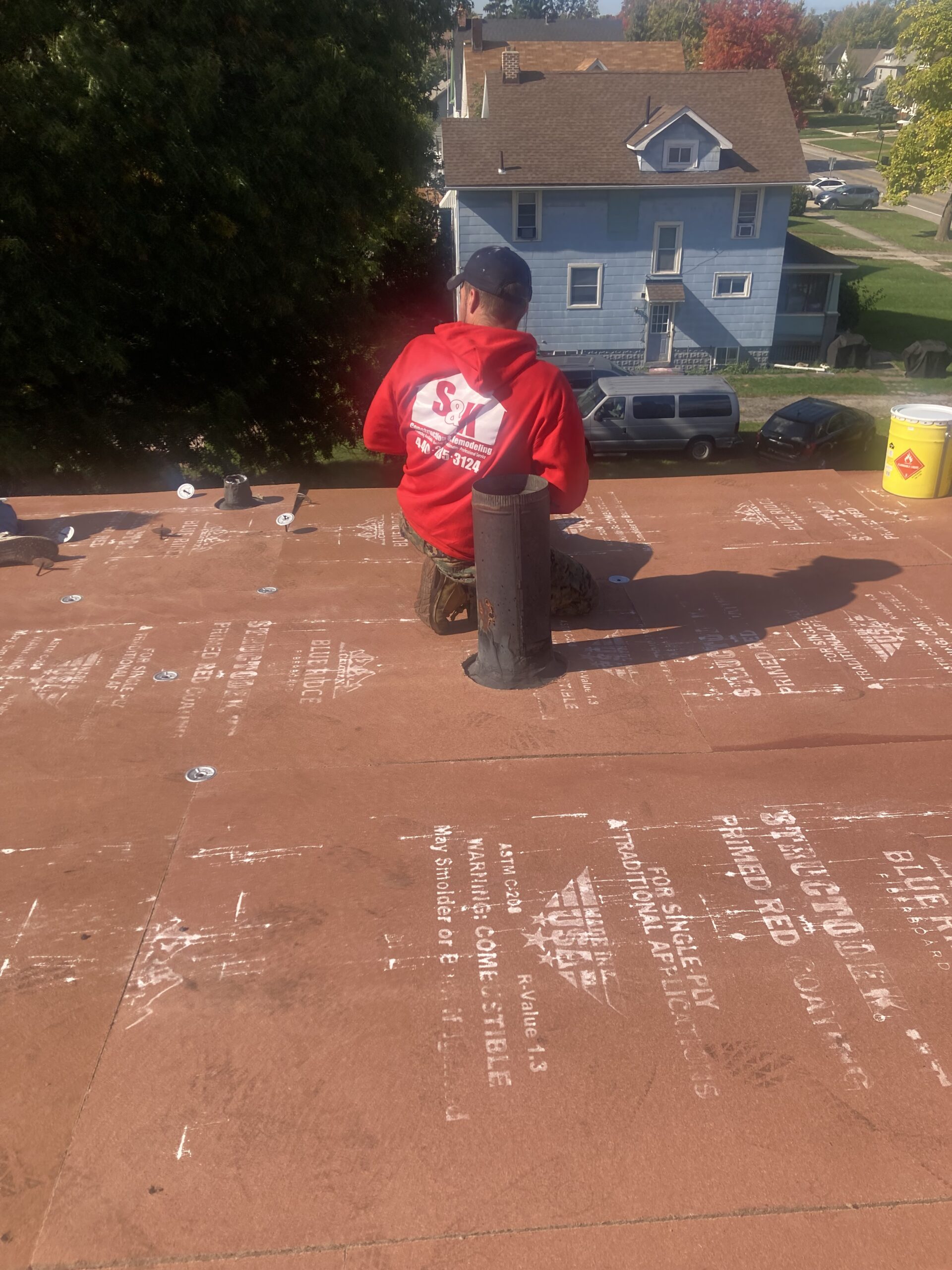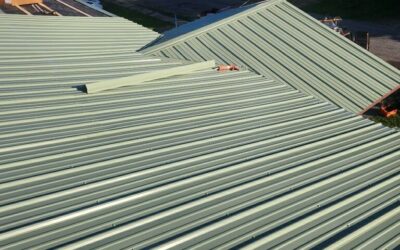The Most Common Reasons Gutters Overflow: A Complete Guide for Homeowners
Gutters play a vital role in protecting your home from water damage. They help to direct rainwater away from your roof, walls, and foundation, preventing issues like leaks, mold, and erosion. However, when gutters become clogged or malfunction, they can overflow, leading to a host of problems for homeowners. Overflowing gutters can cause water damage to your roof, siding, foundation, and landscaping, not to mention the hassle and expense of repairs.
In this comprehensive blog post, we’ll explore the most common reasons gutters overflow, how these issues develop, and what you can do to prevent them. Whether you’re a homeowner looking to maintain your gutters or you’re dealing with a gutter overflow issue right now, this guide will help you understand the root causes of gutter overflow and provide practical solutions for resolving it.
1. Clogged Gutters: The Leading Cause of Overflow
One of the most common and easily preventable causes of gutter overflow is clogging. Over time, gutters collect debris like leaves, twigs, dirt, and even small animals. When this debris accumulates, it blocks the flow of water through the gutter system, causing water to overflow over the sides of the gutters instead of flowing through the downspouts.
How Clogs Form
Clogs typically form when leaves and other debris are left in gutters without regular cleaning. In the fall, for example, trees shed large quantities of leaves, which can quickly fill up gutters if not properly cleaned. Additionally, twigs, branches, and even pine needles can get caught in the gutters and exacerbate the clogging issue.
Once a clog forms, water cannot flow freely through the gutter system. Instead, it backs up and spills over the edge, where it can damage your roof, siding, and landscaping. In extreme cases, a severe clog can even cause gutters to pull away from the roof due to the weight of the debris and the water.
How to Prevent Clogged Gutters
Regular gutter cleaning is the best way to prevent clogs. Homeowners should aim to clean their gutters at least twice a year—once in the spring and again in the fall—although more frequent cleanings may be necessary for homes with many trees or heavy rainfall. You can clean gutters yourself using a ladder, gloves, and a scoop, or you can hire a professional gutter cleaning service to ensure the job is done thoroughly.
For added protection, consider installing gutter guards. These devices fit over your gutters and allow water to flow through while keeping debris out. While no system is entirely maintenance-free, gutter guards can significantly reduce the amount of debris that enters your gutters and minimize the risk of clogs.
2. Improper Gutter Slope (Pitch)
Another common reason gutters overflow is improper slope or pitch. Gutters are designed to have a slight slope that allows water to flow toward the downspouts. If your gutters are installed incorrectly and have too little slope (or no slope at all), water will not flow freely to the downspouts. Instead, it will accumulate in the gutters and eventually overflow.
Why Gutter Slope Matters
Proper slope is crucial because it ensures that water moves efficiently through the gutter system. A slight slope (typically about 1/4 inch per 10 feet) helps gravity pull the water toward the downspouts. When the slope is too shallow or uneven, water can pool in certain areas, causing overflowing.
If your gutters were installed improperly or have shifted over time due to wear and tear, the slope may no longer be correct. This can result in water not being directed away from your home as it should be.
How to Fix Incorrect Gutter Slope
To fix improperly sloped gutters, it may be necessary to have your gutters adjusted or replaced. A professional gutter installation company can assess your gutters and re-slope them to the correct angle to ensure proper water flow. In some cases, adding additional hangers or supports to the gutters may help restore the correct slope.
3. Full Downspouts and Drainage Issues
Even if your gutters are clean and properly sloped, water can still overflow if the downspouts are clogged or obstructed. Downspouts are responsible for directing water from the gutters to the ground or drainage system. If the downspouts become blocked by debris, dirt, or ice, the water has nowhere to go, and it may back up into the gutters, causing them to overflow.
Why Downspouts Become Blocked
Downspouts can become blocked for several reasons. Leaves, twigs, and other debris can make their way into the downspouts, especially if the gutters are not regularly cleaned. Additionally, if the downspouts are poorly maintained or improperly installed, they may become bent or crushed, restricting the flow of water.
In colder climates, downspouts can also become clogged with ice during the winter months. Ice dams that form on the roof can prevent water from flowing freely through the gutters and downspouts, causing backups and overflow.
How to Prevent Downspout Blockages
To prevent downspout blockages, start by ensuring that your gutters are clean and free of debris. You should also inspect the downspouts themselves for any signs of obstruction. Use a hose or plumbing snake to clear out any clogs in the downspouts.
Consider adding downspout extensions to direct water further away from your home’s foundation. These extensions can help prevent water from pooling around your home’s base, which could lead to foundation damage over time.
In colder climates, it’s essential to regularly check for ice dams and take steps to prevent them. Installing heat cables along the roofline can help melt ice dams and keep the water flowing freely through the gutters and downspouts.
4. Gutter Wear and Tear
Over time, gutters can experience wear and tear due to age, weather conditions, and improper maintenance. When gutters become damaged or deteriorate, they may begin to leak or sag, leading to overflow. Common signs of wear and tear include cracks, rust spots, and holes in the gutters.
Why Gutters Wear Out
Gutters are exposed to the elements year-round, which can cause them to deteriorate over time. UV rays from the sun can cause the material to break down, while rain, snow, and ice can lead to rust or corrosion. Additionally, if the gutters become weighed down by debris or standing water, they can sag and lose their ability to properly channel water away from the roof.
How to Fix Worn or Damaged Gutters
If your gutters are damaged or showing signs of wear, it’s essential to have them repaired or replaced. Small holes and cracks can often be patched with a specialized sealant, but if the gutters are severely rusted or sagging, it may be time for a full replacement.
To extend the life of your gutters, make sure they are regularly cleaned and inspected. Replacing any damaged or rusted sections promptly will help ensure that your gutter system continues to function properly and prevent overflow.
5. Overfilled Gutters from Heavy Rainfall or Snow
Another common cause of gutter overflow is extreme weather conditions. Heavy rain or snow can overwhelm gutters that are already at capacity, causing water to spill over the sides. If the gutters are not properly sized or maintained, they may struggle to handle large volumes of water during intense storms or snowmelt.
How Heavy Weather Affects Gutters
During heavy rainfall, gutters can become quickly overwhelmed with water if the drainage system is not functioning optimally. This can happen when the gutters are clogged or undersized for the volume of water they are required to handle.
Similarly, in areas that experience heavy snowfall, gutters can fill with snow and ice, especially if the gutters are poorly insulated or if the roof has an ice dam. When the snow begins to melt, the water has nowhere to go, causing it to overflow.
How to Prevent Overflow from Heavy Weather
To prevent overflow from heavy rainfall or snow, it’s important to ensure that your gutters are the right size for your home. A professional gutter installer can assess your home’s size and roof pitch to determine the optimal gutter size and downspout configuration. Additionally, regular cleaning and maintenance can help keep gutters functioning properly during extreme weather conditions.
In areas prone to heavy snow, consider installing a heating system in your gutters to prevent ice dams from forming. This can help keep your gutters clear during the winter months and prevent water from backing up into the system.
6. Improper Gutter Installation
Finally, improper gutter installation is a common cause of overflow. If gutters are not installed correctly, they may fail to function as intended, leading to water buildup and overflow. Common installation mistakes include incorrect slope, improper downspout placement, and inadequate gutter sizing.
Why Installation Matters
Proper installation is crucial to ensuring that your gutters function effectively. If gutters are installed with an incorrect slope or if downspouts are placed in the wrong locations, water may not flow properly through the system. Additionally, if the gutters are too small or too large for your home’s needs, they may struggle to handle the volume of water that falls during a storm.
How to Ensure Proper Installation
To avoid installation issues, always hire a professional gutter contractor with experience in your area. They will ensure that your gutters are correctly sized, pitched, and installed to provide optimal performance. Proper installation will reduce the risk of overflow and help protect your home from water damage.
Conclusion
Gutter overflow can lead to significant water damage and costly repairs if not addressed promptly. By understanding the most common reasons gutters overflow, homeowners can take proactive steps to prevent these issues from occurring. Regular cleaning, proper gutter slope, downspout maintenance, and timely repairs are key to ensuring that your gutters function effectively and keep water flowing away from your home.
If you’re experiencing gutter overflow issues or are simply looking to prevent future problems, consider working with a professional gutter contractor who can assess your system and recommend the best solutions. With the right care and maintenance, your gutters can continue to protect your home for years to come.
 (440) 307-2060
(440) 307-2060


